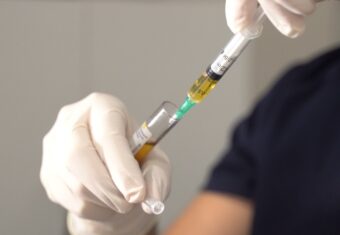Contents
Hair Transplantation in Women
Hair transplantation in women, is frequently used in cases of hair loss due to genetic reasons or trauma. Unlike male pattern hair loss, some tests are applied before the operation because the hormonal system in women can change from time to time. The purpose of these tests is to determine whether the shedding problem is due to a temporary reason or if it is a permanent spill. If there is a permanent hair loss, a hair transplant can be planned by considering the pregnancy and mens status of the person.
Can Hair Transplantations Be Done On Women?
Hair loss problem in women is a common problem, especially in recent years, as it is in men. Female pattern hair loss is different from male pattern hair loss. The shedding may depend on the genetics of the person or after an accident or trauma. The important point is to determine the cause of the loss. If there is an on going health problem, a hair transplant may not be a permanent solution. We can summarize the difficult situations of obtaining a successful result as follows;
- Hormonal changes,
- Vitamin or mineral deficiency
- Drugs used,
- Side effect of an ongoing treatment,
- Excessive use of cosmetics ,
- Excessive hair applications ,
- Skin diseases,
- Cyclic changes.
After the main cause of the loss is found, a treatment should be planned according to the variable that caused the loss. While the condition causing shedding continues, the success rate in hair transplantation planning will be low.
If the shedding is due to genetic reasons or after a trauma, if there is a permanent situation, hair transplantation can be done easily in women and a high success rate can be achieved.
What are the necessary tests before hair transplantation in women?
Female pattern hair loss occurs in a different structure from male pattern hair loss. Since women have a more variable hormone structure than men, there are a number of tests that should be checked before the operation. To summarize briefly;
- Hemogram (Whole Blood) Test
- T3, T4, TSH level tests
- Iron and Iron Binding Capacity test
- Thyroid Ultrasound
- Other gynecological hormone tests
- Zinc level,
- Testosterone level test
In addition, if there is a planned pregnancy due to the extension of the operation to the process, the hair transplant operation should be reconsidered.
Hair Loss analysis in women
The scale that is generally taken as the basis for the worldwide map of male pattern hair loss is the ‘hamilton-norwood scale’. This scale, which is prepared for male pattern hair loss, does not give accurate results in women.
If there is no post-traumatic gap, the scale that can be taken as a basis for female pattern hair loss is the ‘Ludwig Classification’. Ludwig divides female pattern shedding into 3 parts;
- Type 1: Although the anterior line is preserved, there is slight dilution.
- Type 2: Although the anterior line is preserved, the shedding is moderate, disturbing.
- Type 3: frontal line is distorted. Shedding is advanced.
How to make a front line planning in women?
There are three different situations in female hair transplant operations. To summarize briefly;
- Shedding problem has occurred regionally due to trauma,
- There is female pattern shedding,
- Due to the width of the forehead, the front line line is desired to be taken down.
Except for the first option, in other spill situations, a new front line line is needed if the spills have passed the light dilution stage. While determining the female type front line line, unlike the male type front line line, it is not the front line line that rises up and then goes down, but the hair form that continues straight and goes down without rising backwards creates a natural appearance. Since the front line is in the profile and will directly affect the social life of the person, it is one of the issues to be considered.
How is Hair Transplantation done in women?
First of all, the suitability of the person for hair transplantation is checked. For women, extra tests such as hormonal status, pregnancy, cycle, vitamin deficiency should be applied. If the person does not have an obstacle to hair transplantation, the operation can be planned.
Hair transplant operations in women are performed in order to feel better socially, as in men. Since hair transplantation is an aesthetic operation, it should feel good from the beginning to the end of the process. If there is a general sparseness in male pattern hair loss, the operation is performed by cutting the hair as known. The purpose of this is to see the spill situation better and to create an effective working area.
Local shaving is usually done because haircuts in women will create social discomfort. Although the way of cutting differs according to the condition of shedding, it is the last option to cut the hair completely in hair transplantation for women. The parameter based here is the spill map. Unlike the male pattern shedding, the shedding map in women will not change, so planning is usually based on the existing situation. If there is a general shedding, if the shedding has spread over a large area, it may be necessary to cut the hair in order to increase the use of the donor area.
If the spillage has not spread to a general area, if only the front line is planned, or if the spillage has occurred locally with the effect of a trauma, 1 or 2 windows are opened in the donor area, 1 finger wide, depending on the size of the area to be planned. Generally, when it is assumed that women use their long hair, the windows that open can be easily camouflaged with the hair combing style. There is no change in the person’s social life. Daily life can be continued in the same way.
Hair Transplantation techniques used in women;
- Sapphire FUE Hair Transplantation Technique
- DHI choi-pen Hair Transplant Technique
The purpose of the two techniques used is to transfer the hair follicles collected from the donor area with the FUE method to the areas needed in the healthiest way. The choice of technique to be used for the transfer is determined according to the existing situation and the planning to be made. To explain briefly;
If the person’s hair loss is on the front line or regional, the sapphire FUE hair transplant technique can be applied. In this technique, a more natural appearance can be obtained by giving the channel directions more effectively, since the hand is never separated from the transplant area during the channel opening phase (preparation of the places where the grafts will be placed), where the density of the hair is given and the hair directions are determined. At this stage, while steel blades were used in the past, sapphire tips are used today. Sapphire is the material most compatible with human tissue. In this way, tissue recovery time is very short and since smooth channels will be opened due to the structure of the sapphire, tissue graft integration is fully realized. No redness, scars or an unnatural appearance occur in the tissue.
The DHI choi-pen technique will be more suitable if the area to be planned is not regional, if the shedding is spread over a wide area and if a planning will be made between the existing hairs. The tips used in the DHI hair transplant technique are piercing, not cutting, unlike the sapphire hair transplant technique. In this way, when a study is planned between the existing hair follicles in order to obtain a more dense appearance, the existing hair follicles can be effectively protected. Thanks to the special pens called implanter choi-pen, the need for grooving is eliminated. With these pens, grooving and transfer phase takes place at the same time. This is one of the factors that increase the comfort of the person when hair transplantation is performed in women.
Hair Transplantation for Women Unshaven Hair Transplantation
Aesthetic operations are operations planned to make people feel better. An unshaven planning, with the assumption that women usually use their hair in a long form, greatly increases the comfort of hair transplant operation in women. With the hair style changes to be made, the person can continue his daily life in a short time.
Since genetic reasons are dominant in male pattern hair loss, the problem of shedding may continue over time. For this reason, shaved hair transplantation is usually planned. Unshaven hair transplant operations in men are below 1% in general average. After shaving, since a larger donor area will be available, high graft numbers can be achieved, and the area that is likely to spill will be analyzed better, sowing can be planned in these areas to prevent future visual disturbances that may disturb the person.
For women, the situation is somewhat different. Since the genetic probability of the shedding is very low, planning is made according to the existing situation, and unshaven hair transplantation is usually planned for a faster return to social life. In this way, the person goes through a more comfortable process.
Can hair be dyed after hair transplantation in women?
First of all, the hair should be in its natural course while coming to the operation, and any styling should not be used. If the person has white or very light hair color, the hair should be dyed a dark color the day before the operation. This will increase the success of the operation.
After the operation, no hair treatment or cosmetic use is recommended for 6 months. Depending on the post-operative period of the person, dye can be applied after the 6th month following the operation.
Forehead narrowing with hair transplantation in women
In fact, hair transplantation is the only treatment method that can be applied to people who do not have hair loss problems and who have a wide forehead due to their genetic structure, to achieve a more aesthetic appearance. The application is done under local anesthesia. Since painless anesthesia will be used during anesthesia, the person does not feel any pain that will be uncomfortable. A 1-finger-wide area is shaved between the existing hair (1 or 2, depending on the need) in the nape area, which is called the donor area, and a determined number of grafts are taken during planning using the FUE technique. Existing hair after the removal process provides camouflage of the shaved area.
Shaving is not done in order not to spoil the aesthetic appearance in the forehead area. The roots taken are transferred to the needed area within the front line line created with the people according to the face composition of the person.
In the transfer phase, two hair transplantation techniques are generally used together. While sapphire hair transplantation is applied to the balding area due to the fact that the hair directions can be given more naturally, DHI hair transplantation technique is used to protect the existing hair as much as possible so that there is no gap between the original hair and the transferred hair. Sapphire hair transplantation technique and DHI technique are used together in the same operation. In this way, the most effective result is targeted.
The Hair Transplant age range for women
Although the female pattern hair loss process does not continue over time, unlike the male pattern hair loss process, it is not recommended at very young or very advanced ages due to the high risk of making wrong decisions at very young ages and the risks that may be taken at later ages due to age. The most important stage in hair transplantation in women is the planning stage. The consequences of a wrong decision to be taken during the planning phase or a wrong planning to be made can be severe.
Is Hair Transplantation Difficult for Women?
Contrary to what is known, hair transplantation in women is easier than in men. Although it varies depending on the shedding map in male pattern shedding, high graft numbers are generally needed. In female type hair loss, on the other hand, genetically, shedding will occur in smaller areas than men, so high graft numbers are not needed and this directly affects the duration of the operation.
In addition, with the developing technology, the comfort of hair transplantation operations has increased and the social and psychological pressure experienced before the operation has become more difficult than the post-operative period.
How successful is Hair Transplantation in Women?
The most important point for a successful operation in women is to find the cause of the shedding. If a hair transplant operation is planned due to a genetically caused hair map or a post-traumatic gap, very successful results can be obtained, while if a hair loss problem occurs due to a variable reason, the success rate may decrease. For this reason, the reason for the shedding should be found, a treatment protocol should be followed for this reason first, and then, if there is a permanent shedding/dilution, hair transplantation planning should be done.
Things to consider before hair transplantation in women
Generally, people have concerns about the difficulty of the operation before the operation and the difficulties of the post-operative process. With the technologies used today, the social, physical and psychological pressures that men and women who experience hair loss experience before the operation are more than after the operation. The issues to be considered before hair transplantation in women can be listed as follows;
- The suitability of the person for the operation should be checked.
- If there is an ongoing treatment, the doctor who will perform the operation should be informed.
- If the person has an allergic nature, the person who will perform the operation should be informed.
- Hair styling should not be applied to the hair before the operation.
- If there is smoking, it should be restricted, if possible, it should be stopped completely.
- Alcohol intake should be restricted 10 days in advance.
- Drinks with blood thinning effects (such as coffee, green tea) should be avoided 1 week before.
- You should come to the operation rested and have breakfast.
Things to consider after hair transplantation in women
- After the operation, it is necessary to stay in constant contact with the doctor who performed the operation and follow her recommendations.
- The planting area should be protected against rubbing and bumps for 10 days.
- Drinks with blood thinning effects such as blood, green tea and coffee should be avoided for 1 week.
- Maximum attention should be paid to daily washings.
- If there is, smoking should be reduced and if possible, it should be stopped completely.
- Alcohol consumption should be restricted, especially in the first 10 days.
Hair Transplant results in women / Before and after
Hair Transplant prices for women
The price of the operation varies according to the time of the operation, the package to be taken and the planning to be made. You can get detailed information about hair transplant prices for current women here.












